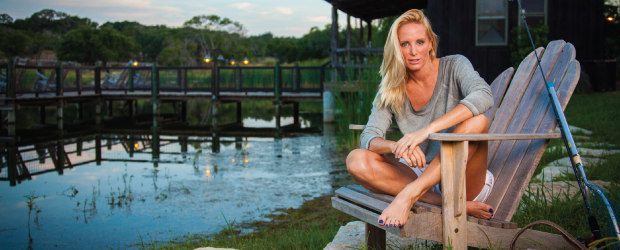What is Freediving?

Deep in the ocean, hundreds of feet below the surface, Tanya Streeter is in her element. She wears a skin-tight, silver body suit over her tall 5-foot 7-inch frame and a mono fin that looks like a tail when she kicks her feet together in one fluid motion. Streeter appears like a dolphin underwater until she opts to let her long hair flow instead of hiding it under a swim cap. Then she could be a mermaid. In a way, Streeter is a mermaid; she can swim underwater for minutes at a time all in one breath and with no scuba tank.
Streeter is a world famous freediver. Freediving is a sport that involves diving into unfathomable depths of the ocean in a single breath and holding that breath until resurfacing.
No Limits is one of many different types of apnea (absence of breathing) competitions. The United States Apnea Association (USAA) holds freediving competitions in three difference categories: time, distance, and depth. Streeter specialized in the depths rather than swimming pools, and there are several different disciplines of deep freediving. In all depth competitions, a guide rope is used in order to judge how far a diver can go, but there are different rules as to how the rope can be used. In Constant Weight freediving, the rope can only be used as a guide and not for propulsion; divers use either bifins or a monofin to move. In Free Immersion, divers–without fins– use the rope to pull themselves down and back up to the surface. Constant Weight without Fins diving involves using a form of breaststroke for propulsion without wearing fins or utilizing the rope. No Limits, arguably the most dangerous form of freediving, allows divers to actually ride a weight (called a sled) on the rope down to great depths of the ocean. They then utilize a buoyancy bag (a balloon filled with air from a scuba tank), which is held onto during the journey back to the surface. The type of equipment used and method of propulsion utilized by the diver determine the discipline of the dive, but one thing remains constant—all of these dives prohibit the use of breathing apparatuses.
Streeter discovered freediving in 1997 while she was still living in the Cayman Islands. She was out with friends on a spearfishing trip, spotting fish and diving in to retrieve the catches. Her friends, noting her abilities, invited her to come along with them to a clinic presented by the well-known freediver Francisco “Pipin” Ferreras. She decided to join them and impressed everyone with a dive of 100 feet. Among those impressed was Ferreras himself, who called Streeter that night to ask if she would consider attempting to break the U.S. Constant Weight record, then 165 feet, which had previously been set by another Ferreras-trained athlete. It took Streeter over a month to be convinced, but she finally accepted the challenge. “What fascinated me was just the idea of trying,” Streeter said. “I wasn’t doing it for the record. I was doing it for my own journey.”
Ferreras seemed to move on during the time it took Streeter to commit to this challenge, but one of his trainers took an interest, putting her through an intense training program, which included cardio workouts, strength training, and a series of breathing exercises that she calls “specifics.” Despite her athletic background, Streeter claimed she had never set foot inside a gym until she started training to break the record. It was hard on her body, especially on her weak legs, because from the waist down she “was a mess, muscularly speaking,” thanks to a spinal fusion and multiple knee surgeries. However, after only three months of training, Streeter was able to break the record.
-160m Tanya Streeter No limits by lostrano
Streeter then refocused on her day job as a social secretary and office manager to the governor of the Cayman Islands. However, she soon realized she’d been bitten by the freediving bug; she wanted to see what she was made of and how far she could push herself. Her trainer proposed that she go for the No Limits world record and Streeter accepted the challenge to undertake her first sled dive, this time to 375 feet. She got back in the gym and back in the water. Streeter went on to break a total of ten world records (both men’s and women’s) during her career. According to the Women Divers Hall of Fame, Tanya Streeter became “…the only woman in history to break a man’s world record in any sport when she freedived to 525 feet in 2002”, and that No Limits world record still stands for women today. That dive took Streeter three minutes and 26 seconds…all without breathing.
To read more about Streeter’s record-breaking dive: www.apneamagazine.com/tanya_record-eng.html






